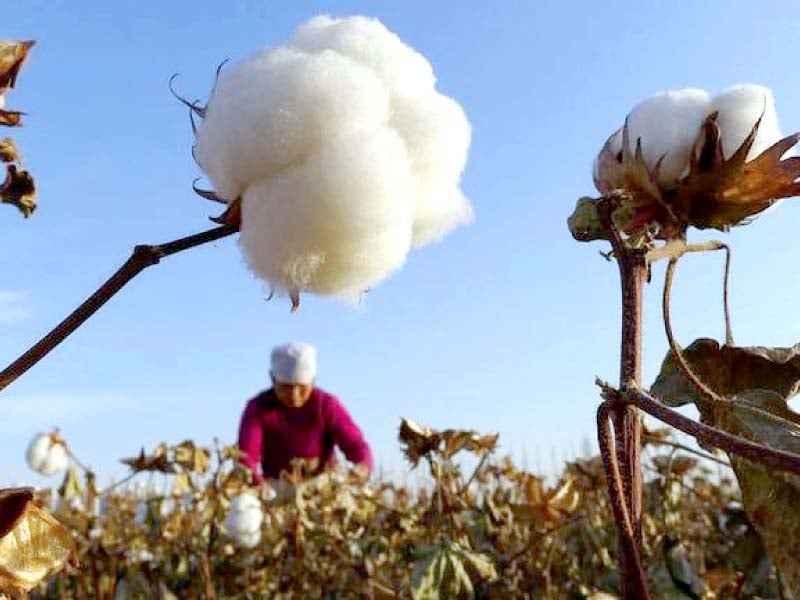
The prospects of gradual restoration of trade ties with India have suddenly increased after a deal to maintain peace at Line of Control and the government may, in the first phase, allow the cotton import through land route.
Just two weeks ago, Adviser to the Prime Minister on Commerce Abdul Razak Dawood had ruled out the possibility of importing cotton from India to bridge the yawning domestic shortfall. But a breakthrough over 2003 ceasefire agreement on the Line of Control between Pakistan and India has provided an opportunity to the commerce ministry to revisit the decision.
Sources in the Ministry of Commerce told The Express Tribune that the adviser may take a decision on whether to import cotton and yarn from India next week. They said that the issue of cotton shortfall has already been brought to the notice of Prime Minister Imran Khan. Once a principled decision is taken, a formal summary will be presented before the Economic Coordination Committee of the cabinet, they added
The sources said that in-house deliberations have already begun but the final decision would be taken only after seeking the approval of Prime Minister Imran, who also holds the portfolio of the commerce minister
“I cannot say yes or no at this stage and would be in a better position to respond on Monday,” said Dawood while responding to a question on whether Pakistan was considering allowing cotton import from India.
Pakistan had severed trade ties with India after New Delhi unilaterally annexed Jammu and Kashmir by ending its special status granted under Article 370 of Indian constitution. The trade ties between both the countries can help minimise cost of production and ensure sustained food supplies.
Against the annual estimated consumption of minimum 12 million bales, the Ministry of National Food Security and Research expects only 7.7 million bales production this year. However, cotton ginners have given the lowest production estimates of only 5.5 million bales for this year.
Also read: New textile policy on the cards
There is at minimum shortfall of six million bales and the country has so for imported roughly 688,305 metric tons of cotton and yarn, costing $1.1 billion, according to the Pakistan Bureau of Statistics. There is still a gap of about 3.5 million bales that needs to be filled through imports.
Surprisingly, the All Pakistan Textile Mills Association (Aptma) is exerting pressure on the government not to allow cotton and yarn import from India. An industry insider said that few millers have already hoarded the cotton and were now charging higher rates and import would dampen their short-term earnings.
In an appeal to Dawood, Aptma said that the import of yarn from India will directly impact cotton prices in Pakistan. It added that the cotton price in Pakistan is currently at an all-time high of Rs12,000 per maund, providing sufficient incentives to the farmer to grow cotton.
“The cotton sowing season is currently starting in Pakistan and the predicted drop in cotton price owing to import of yarn from India is approximately 10-15%, discouraging farmers not to sow cotton,” according to the Aptma.
It is rare that the textile manufacturers ask the government to keep their input prices high, pointing that something was wrong in their business strategy.
Due to shortage of cotton and yarn, the users were compelled to import the commodities from the United States, Brazil and Uzbekistan. India is the second largest cotton producer after the US. Imports from India would be far cheaper and would reach Pakistan within three to four days.
Importing yarn from other countries was not only expensive but would also take one to two months to reach Pakistan, according to the businessmen who deal in these commodities. The delay in yarn import can pose risk to timely deliver the export orders.
Published in The Express Tribune, February 28th, 2021.
Like Business on Facebook, follow @TribuneBiz on Twitter to stay informed and join in the conversation.
1719660634-1/BeFunky-collage-nicole-(1)1719660634-1-405x300.webp)

1732276540-0/kim-(10)1732276540-0-165x106.webp)

1732274008-0/Ariana-Grande-and-Kristin-Chenoweth-(1)1732274008-0-165x106.webp)












COMMENTS
Comments are moderated and generally will be posted if they are on-topic and not abusive.
For more information, please see our Comments FAQ